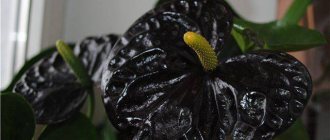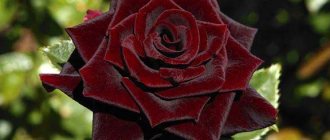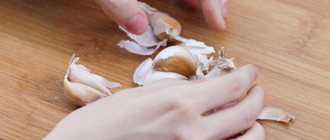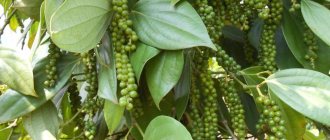What is special about the variety?
The plant has all the characteristics of the parent varieties: the anthurium cob is yellow-green, but the spathe itself on the flowers of one bush can be either the same color or of different colors. During the budding phase, a rich cherry color predominates, but when the spathe is fully opened, it turns black with a dark red tint. However, there are anthuriums that can have flowers with both black and cherry stipules on one plant.
Black or red covers on anthurium cobs are in perfect harmony with dark leaves, which have a glossy sheen and are painted with lighter veins.
Connoisseurs of exotic plants try to get Black Queen into their collection, although some gardeners prefer to avoid it due to its almost mournful coloring.
General information
Anthurium is a rather beautiful flower with original flowers and decorative leaves. Anthuriums growing at home can be divided into three groups: variegated or deciduous-decorative, beautifully flowering and green-leaved. Anthurium Black Queen belongs to the green-leaved group.
Anthurium home.
In deciduous and decorative anthurium, not only the flowers are beautiful, but also the leaves, such as the crystal anthurium. Its leaves have an unusual appearance due to light veins that form an original pattern on a dark green background.
As for the Black Queen variety, it differs from other relatives in that its bract or spathe is black with a red tint. At the beginning of flowering, the buds have a cherry color, but over time the bract turns black, maintaining a red tint; the leaves of black anthurium remain green throughout its life.
Black queen is a hybrid variety that has retained all the features of the parent varieties, so not all flowers on the bush can be black, some remain red. As a result of this diversity, the flower has a rather original appearance - black-red and red flowers with light green cobs look beautiful together with green leaves.
The black prince, or black queen, is a flower for lovers; not all gardeners are impressed by its mourning appearance, but some gardeners like to have such an unusual specimen in their collection.
Another hybrid anthurium variety with dark flowers is Anthurium Chocolate Love (chocolate love - chocolate love). Anthurium cultivar Chocolate Lava - distinguished by a brown bract, light-colored spadix and green leaves, it belongs to the group of green-leaved anthuriums.
What does Their Highness the Black Prince like?
Like all anthuriums, Black Queen needs careful care, in which the bush will not only grow well, but also bloom abundantly. To do this, you need to provide him with:
- Diffused lighting . The southern room is suitable for the plant only in winter, and it is advisable to place the pot not on the windowsill itself, but on a stand or cabinet by the window. The rest of the year, anthurium should live in the east or west; direct sunlight is harmful to it.
- Watering and spraying . In winter, it is enough to water the anthurium once a week, with the arrival of spring - double the frequency, not allowing the water to stagnate in the pot and tray. Anthurium loves showering and spraying, but only on the leaves, without affecting the inflorescences. You can wipe the leaves with a damp sponge.
- Comfortable temperature . Do not allow the temperature to rise above 25 degrees in summer, and do not allow it to drop below 12 degrees in winter.
- Periodic feeding . It is especially important to fertilize the Black Prince with complex preparations during the formation of inflorescences.
Caring for Anthurium Black Prince at home
Black representatives of anthuriums, just like their colored epiphyte counterparts, require increased attention and special conditions. It is important to assume that they are residents of the tropics and remember what the climate is like there.
Lighting
Tropical plants living on branches, although they reach for the sun, see only the light scattered between the tree crowns. In an apartment, this can be found either on the east and west windows, or with good shading on the south side, or not at all on the window sill itself, but on a stand nearby.
Towards the end of winter, when the anthurium's dormant period ends, it will also need an increase in daylight hours.
Temperature and humidity
Summer in the tropics is 20-28 °C warm. This indicator is important for anthuriums in the apartment. It is important to avoid drafts, and when ventilating, you need to take the plant out of the room. In winter, the flower needs to be lowered to 16 degrees, ideally if there is a winter garden or loggia for this.
Humidity is another strict indicator, without which anthuriums will not bloom. The optimal level here is 80%. It is difficult to achieve such results on a simple window. There are these options:
- create a “wet aura” by constantly moistening a tray with pebbles or moss;
- buy a humidifier;
- place the pot near the aquarium;
- Spray often with a fine spray, but make sure that the drops do not fall directly on the leaves, and especially take care of the flowers: if water gets in, they will quickly fall off.
Orchidarium
Such plants thrive in special boxes - orchidariums, made like aquariums; it is easy to arrange and maintain the desired microclimate there.
Watering and fertilizing
Anthuriums should be watered with warm, soft water. Softness can be achieved by boiling and cooling water or freezing and melting, as well as filtering or infusing. This will remove harmful impurities from the water (primarily tap chlorine). It would be ideal to add a drop of natural apple cider vinegar or lemon juice to soften the water from the calcium stone. The watering temperature should also imitate tropical rain - be warm and pleasant.
How often are epiphytes watered?
- In summer, 1-2 times a week, allowing the soil to dry out just a little. And it is much more important to prevent water from stagnating; be sure to let the water drain after watering, and then pour out the excess from the pan.
- In winter, reduce watering to once a week, the indicator is 30% dry substrate.
The plant needs feeding during the growing season, which means the whole spring and summer, including February and September. You can fertilize with complex products, dividing them according to their purpose: for decorative deciduous plants and for flowering ones (depending on the fact of anthurium flowering at the time of feeding). You can also add modern organic biofertilizers (for example, vermicompost) to the water for irrigation or mix them into the soil for planting.
Preparing for winter
Winter in the tropics is a period when the growing season stops, plants rest, lay new buds and buds. In apartment conditions, you need to lower the temperature, halve watering and remove fertilizing. It is also worth recalling humidity in winter: it should not drop to a critical 70%, and this, unfortunately, is more than realistic during the heating season. Therefore, the advice in the section on humidity is also relevant in winter.
It will also be interesting: Anthurium Crystal - caring for a houseplant at home?
What do spots on anthurium leaves mean?
Dark green leaves serve as a kind of health indicator for the flower. At the first signs of a change in their color, you should immediately take measures to save the anthurium:
- yellowing of leaves - lack of light, improper watering or lack of nutrients;
- light or brown spots - from the cold;
- black spots – excess calcium in the soil.
Stains on the bedspread indicate that droplets of water got on them during spraying.
Video about the features of caring for Black Queen anthurium
Planting and transplanting
Before planting or replanting ficus elastic, it is necessary to prepare the soil containing equal proportions of turf, peat and leaf soil, coarse sand, and compost.
You can also purchase specialized soil at any flower shop.
The alkaline balance should be between 5 and 7 pH.
Transplantation is carried out in the spring.
For this procedure, you should choose the right size of the pot, which should be 2-6 cm larger in diameter than the previous one.
In the photo is the ficus "Black Prince":
The unfinished story of Anthurium Black Prince
I want to tell you an instructive story of one of my Anthuriums. I think you will be interested in gaining some experience in caring for a flower. There will also be an opportunity to discuss and share your observations. So, 10 years ago the first Anthurium appeared in my house. My eldest daughter gave it to me for my birthday, Anthurium Black Queen or Black Prince.
It was already an adult plant, about 1 meter high. Huge glossy leaves and equally large flowers, some were red-black, others red.
Later I learned that the peculiarity of the Black Queen variety is the different colors of the inflorescences. A hybrid, an artificially bred variety that takes two colors from its parents.
Then it struck me with its beauty and majesty; it is not for nothing that they say that it is a flower of luxury and prosperity.
One can only guess how much work it took for my daughter to find, and most importantly, bring this miracle. After all, at that time Anthuriums were not as popular as they are now. Moreover, our town is small, there are few flower shops, and they mainly sold cut flowers. I still remember these feelings of delight, surprise and gratitude to my daughter for such a gift.
This is where my passion for Anthurium began. From the first day he arrived in my house, he became the pride of the whole family. With love he was nicknamed Prince.
My friends, amazed by the sophistication and beauty of my Prince, stood in line for his children and slowly began to bribe themselves with this or that variety of Anthurium. This is how the collection appeared
Ficus Black Prince: tips for care, propagation and replanting
Ficus Black Prince is another variety of Ficus Rubber, which today is one of the most popular in home floriculture.
This plant with such a noble name came to us from Southern Indonesia, Northeast India, West Africa and Nepal. There, in its homeland, Ficus Elastica Black Prince grows up to 40 m in height - thus, it is used industrially to produce rubber. But how did he conquer flower growers involved in ornamental cultivation? It's simple - its large, rounded leathery leaves up to 25 cm in length and up to 20 cm in width, of a deep, dark green color, have done their job. In addition, the trunk and petioles have the same color with a reddish tint. The central vein is clearly visible from both sides of the leaf and has a brown tint. Ficus Black Prince photo
What does Their Highness the Black Prince like?
Like all anthuriums, Black Queen needs careful care, in which the bush will not only grow well, but also bloom well. To do this, you need to provide him with:
- Diffused lighting . The southern room is suitable for the plant only in winter, and it would be a good idea to place the pot not on the window sill itself, but on a stand or bedside table next to the window. At other times of the year, anthurium should live in the east or west; direct rays of the sun are destructive for it.
- Watering and spraying . During winter, it is enough to water the anthurium once a week; with the advent of spring, double the frequency, not allowing the water to linger in the pot and tray. Anthurium loves showering and spraying, but only on the leaves, without touching the inflorescences. You can wipe the sheets with a wet rag.
- Good temperature . Do not allow the temperature to rise above 25 degrees in summer, and in the winter do not allow it to drop below 12 degrees Celsius.
- Periodic feeding . It is very important to fertilize the Black Prince with complex preparations during the formation of inflorescences.
Every 2 years, anthurium needs to be transplanted into new nutritious soil, but it is not recommended to take a very large pot. Of course, the flower will grow in it, growing roots and foliage, but flowering will not begin until recently, when the root system fills the entire flowerpot.
Care after purchase
Ficus "Black Prince": care at home
When purchasing a plant, it is necessary to accurately determine the variety, since most suppliers often classify other varieties as it.
At home, the tree loses its natural ability to actively branch, but with proper care it can live for more than 40 years.
Watering
Watering is carried out with settled water as half of the top layer of the substrate dries.
Attention! Excessive moisture can lead to root rot and further death of the ficus elastica.
Bloom
The plant, as a rule, almost never blooms in any type of room.
In exceptional cases, ficus can please you with round fruits of yellow-green color, reaching a diameter of 1 cm.
Crown formation
- The formation of the crown of an already mature tree can occur in three ways:
- Pruning involves removing not only the top shoots, but also the nearby internodes (3-5 pieces).
- Fixing the trunk in a bent position, which will facilitate the replacement of a lateral bud with a dominant one.
- Puncture a tree trunk with a sterilized thick needle to 1/3 of its thickness in order to stimulate the emergence of new shoots.
How to properly care for the Black Prince
This is a grateful plant; if you provide it with good care at home, it will delight the gardener with beautiful foliage and a healthy appearance . Suitable soil, the optimal pot size and a convenient location in the house are what it needs for successful growth.
The Black Prince can adapt to different conditions of detention, but the only thing he doesn’t like is rearrangements. It is better to immediately, even before purchasing, determine a place for it in the house and always keep it there.
What else can destroy the health of a flower? He does not tolerate drafts in the room, so find him a quiet place where he will feel good. And most importantly, it does not tolerate waterlogging of the earthen coma, the roots may begin to rot , then the ficus will need urgent treatment.
Composition of soil for a flower
The Black Prince is picky about the composition of the soil; it is necessary to correctly compose the soil mixture for replanting it. Ficus roots need to breathe, so the best pot for it is clay , without glaze or other external coating. It likes the addition of natural fertilizers and slightly acidic soil.
The soil for the plant should be fertile and light enough. Land containing clay is contraindicated for it, since water stagnates in it .
For a young ficus, you need to prepare the soil with the following composition (in equal parts):
An adult plant needs denser soil ; the following composition is prepared for it: 2 parts of leaf humus, one part each of sand and turf soil.
Knowing these recipes, the gardener can prepare the soil himself at home. The soil mixture should be loose; for this, some coarse sand is added, as well as charcoal .
Planting and transplanting
A plant purchased in a store is already planted in suitable soil, so after purchase you only need to take care of suitable maintenance conditions and watering .
If you decide to propagate the Ficus Black Prince yourself, in order for it to take root better, add vermicompost to the soil. Wood ash will additionally provide important microelements such as phosphorus and potassium.
An old plant that has reached a large size must be replanted (transferred) once every 5 or 6 years. So that an adult flower can receive more nutrients , replace the top layer of soil with new fertile soil.
Temperature and lighting
In summer, ficus requires an ambient temperature of 18 to 25 degrees, and in winter – at least 16.
In hot weather, the plant will suffer from a lack of water , but since the Black Prince does not like waterlogging of the soil, irrigating the leaves with a spray bottle will be an additional source of moisture.











